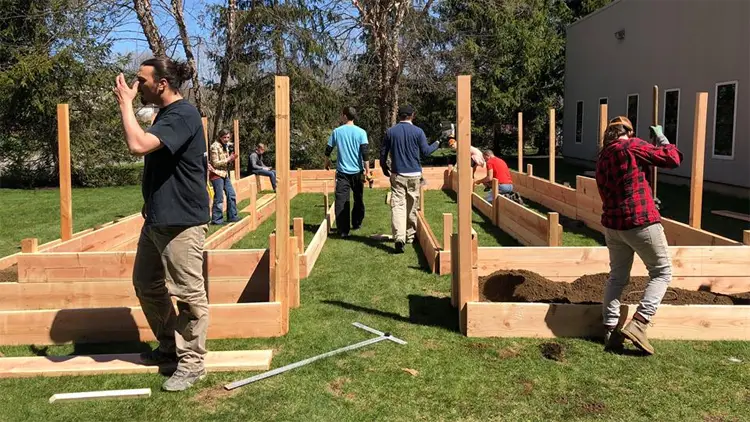Twenty-five years ago, CRPE was founded on the idea of the school as the locus of change. Today we are reexamining our old assumptions in light of new technical possibilities, changes in the economy, and a recognition that even the most effective schools may need to develop new approaches to better serve students whose needs warrant more individualized learning pathways or supports. This post is part of a series on what the school or learning system of the next 25 years might look like.
On the face of it, Workspace Education and the NYC Autism Charter School (NYCACS) are completely different places. I fell into both of these visits by chance and didn’t think of them as related in any way. One serves a predominantly homeschool population: confident, creative, independent, and mature kids who are aiming for some of the most prestigious colleges and careers. The other serves kids whose families hope they might live independently one day and hold a job of any kind. Their cost structures, regulatory oversight, and instructional approaches could not be more different.
Still, something connects the two that is pretty powerful. Both got me wondering about what school is: A place? A building? An integrated set of experiences? Is it school if, like NYCACS, the goal is not primarily academic?
Several common threads were hard to miss:
Coproduction with parents is a primary theory of action. At Workspace, parents and students take the lead and the structures are designed to support and facilitate that effort. At one end of the spectrum are the homeschooling families, but Workspace creates the opportunity to leverage parent support in other ways as well. At NYCACS, supporting and coaching parents are considered essential to serving the students.
The student is the X that everyone is solving for. In both places, maximizing students’ life goals and assets is the primary purpose of the schooling experience. Lessons, internships, assessments, and social development strategies are all designed in support of those goals. At NYCACS, the IEP goals are set annually, but daily social groupings, lessons, and data collection are all pegged to those goals. Teachers carry around tablets with curricular resources to allow them to design curriculum in real time, and there is constant diagnosis and creative problem solving to address challenges.
Community assets are leveraged to the hilt. In neither instance are the walls of the building seen as limits to solving for student success. At Workspace, the portfolio of learning opportunities is expanding faster than the building can accommodate, so they are adding more space and virtual learning options. At NYCACS, they have developed mentor programs with partner schools, opportunities for students to learn in mainstream classrooms, internships, university partnerships, and other programs.
It’s easy to appreciate the ways in which both of the programs or schools (or whatever they are) are radically personalizing student pathways, despite the limitations or weaknesses of each of them. The challenge is to think about how the lessons might translate more broadly where parents may not have the same interest or capacity to coproduce, where regulatory structures don’t allow for the kind of teamwork and planning required to effectively diagnose and solve for student needs, where services and curricula can’t be unbundled and reconceived because funds and other inputs are hardwired into the current modes of operation. Thinking through the logical extension of these more extreme models also, necessarily, raises the question of whether schools that we consider high-performing today and serving “average” students would benefit from adopting some of these approaches. If so, we have technical work, capacity-building, and policy and advocacy changes ahead to make that happen. Cities that have promoted a “portfolio” of school models may need to also think about creating more schools and CMOs that see their role as overseeing a portfolio of learning options and pathways.
It’s not easy to see how to take on those systemic questions and where they all lead, but it’s the most interesting challenge I can imagine right now. Stay tuned for another post on that.
Read more:




